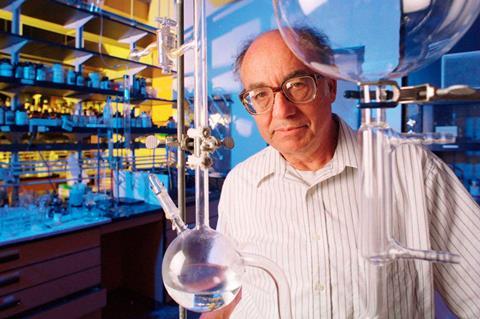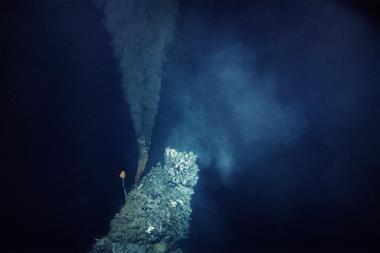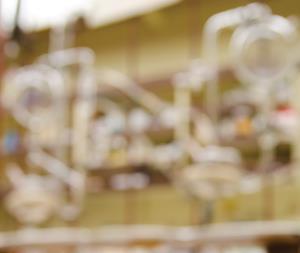The Miller–Urey ‘primordial soup’ experiment has always been run in borosilicate flasks, which is a bit of luck as the glass promotes the formation of amino acids, peptides and nucleobases, scientists have discovered.
In 1952, PhD student Stanley Miller and doctoral adviser Harold Urey ran what would become a classic experiment for scientists trying to find out how simple compounds turned into the molecules of life. The pair designed a setup thought to simulate conditions on Earth 4 billion years ago, combining water, methane, hydrogen and ammonia. They then created an artificial lightning storm in the flask with an electric arc between two electrodes.
What Miller and Urey might not have considered is that glass flasks seem to be a key ingredient in the reaction, as researchers in Spain and Italy have now discovered. They performed the reaction in a regular borosilicate glass reactor, a Teflon reactor and a Teflon reactor that contained pieces of borosilicate glass in the water.

Only when run in glassware did the reaction create a brown broth containing at least 52 organic compounds. In particular, a dipeptide, certain amino acids, dicarboxylic acids, polycyclic aromatic hydrocarbons and a group of biological nucleobases formed more efficiently or exclusively in glass vessels – and to a lesser extent when glass shards were added to a plastic flask. While it remains unclear how exactly glass promotes reactivity, it likely has to do with surface silanol groups and traces of metal released from the glass into solution.
In the decades since 1952, evidence has emerged that the gas mixture used in the reaction might not be representative of early Earth’s early atmosphere after all. Nevertheless, the Spanish–Italian team suggests that by running the reaction in borosilicate flasks, Miller and Urey might have been unwittingly simulated the role of rocks and minerals – a factor now known to be important in origin of life processes.
References
J Criado-Reyes et al, Sci. Rep., 2021, 11, 21009 (DOI: 10.1038/s41598-021-00235-4)












2 readers' comments